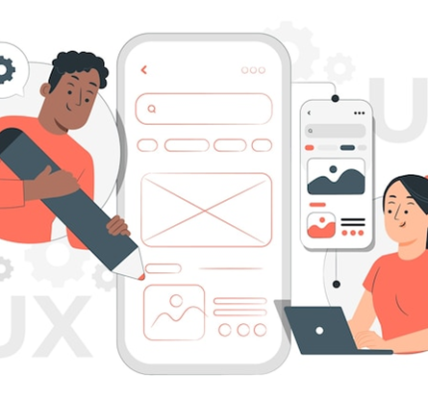The term “digital accessibility” refers to all individuals’ ability to use digital resources and services regardless of their abilities or limitations. It’s vital to understand that only some people use digital products and services in the same manner, if at all. Some people only wear them on rare occasions. For example, a person with a learning disability may need more intelligible information than a blind person who can use a screen reader.
How can you ensure that everyone has access to your digital products? QualityLogic’s experts can assist you. We realize how perplexing or difficult accessibility may appear, but our pros can communicate effectively with you, so you understand what you’re doing now and what has to be altered.
Before contacting us, you may use the following information to establish how accessible your items are right now.
Straightforward Details
Regardless of how obvious it appears, make sure the information you present is clear and crisp. Avoiding jargon and using exact language can help with this. Making your work available in a variety of media formats, including audio and video, for those who choose or are required to consume it in a different form is also a component.
Remember the Rules
The Web Content Accessibility Guidelines (WCAG) 2.0 are the most widely accepted collection of accessibility standards and regulations. The WCAG 2.0 standard is one of several rules and standards. In addition, other nations are developing equivalent norms and criteria. It is vital to keep up with any changes in order to verify that your products and services are legal.
Utilize Moving Imagery
Incorporating graphics and videos into your text may make it more interesting and straightforward to read. They must, however, be used wisely in order to offset the accessibility concerns that their presence causes. Create text equivalents for photographs and movies so that people who cannot see them may grasp what they’re saying. Check the contrast of your images and videos to ensure that those with low vision can see them.
Make Products With Accessibility in Mind
The easiest method to ensure that your digital products and services are useable by everyone is to design them with digital accessibility in mind from the outset. User research is the first step in the design process, and accessibility must be addressed at all phases, all the way up to coding. Collaborate with accessibility specialists to create designs that are as user-friendly as feasible.
Conduct an accessibility audit to ensure that current standards and criteria are met. Even if your products and services were created with digital accessibility in mind, usability testing is required. This guarantees that your consumers may utilize them securely. This entails the use of various testing methods and equipment, such as automated accessibility testing and manual testing by individuals with disabilities.
The Advantages of Digital Access
The World Health Organization defines disability as “a wide word that encompasses impairments, activity limits, and participation restraints.” Disabilities might result from physical, sensory, cognitive, intellectual, or behavioral health difficulties. Disability is expected to affect one billion people globally, making it one of the most frequent medical illnesses.
Despite this, disabled persons may experience challenges in accessing services such as work and education. One method to help reduce these obstacles is to make digital products and services available to everyone. This involves creating websites and applications for a wide spectrum of disabled persons, including those who are blind or have limited vision, deaf or have hearing loss, and those with cognitive or intellectual impairments. By making digital material and services more accessible, we can assist in removing some of the barriers that individuals with disabilities confront, allowing them to live full, inclusive lives.
The Use of Digital Content by Disabled People
People with disabilities have specific problems when it comes to accessing digital resources. For the blind or visually challenged, text-to-audio translation may be required. Deaf or hard-of-hearing people may need subtitles or transcripts to access audio and video material. For persons with cognitive limitations, it may be essential to simplify the presentation of content. Additionally, persons with physical limitations may require material that may be accessed via various input devices, such as switches or eye-gaze trackers. Website designers and developers may generate digital material that is accessible to a broader audience by using these several criteria.
When Designing, Keep the Blind in Mind
When it comes to digital information, it is vital to recognize that not all interactions with the world are the same. Those who are blind or have low vision, for example, rely extensively on a variety of clues to comprehend information. As a result, while creating digital entertainment for youngsters, specific safeguards must be taken. For example, each image should contain several text explanations. All videos must include captions and audio descriptions. These precautions will assist in guaranteeing that your digital assets are accessible to everyone.
Considering Hearing People When Designing
It is vital to consider the needs of all possible viewers while generating digital content. This is especially true for those with impairments, who may struggle to interpret normal material forms. Closed captioning enables deaf or hard-of-hearing people to see digital information.
There are various aspects to consider while generating digital material with closed captions. First and foremost, the captions must be easy to read and comprehend. This includes avoiding fancy, difficult-to-read typefaces and employing huge font sizes. Audio and subtitles should also be synced. This may be performed by either manually transcribing the audio track while utilizing software that creates automated captions or by generating the captions manually. Captions must be properly checked to ensure there are no errors.
You can develop digital material that anybody, regardless of handicap, may use if you follow these rules. Closed captioning is one approach for making your material more accessible; audio description and sign language interpretation are more choices. It is feasible to produce digital information that is accessible to all individuals when their requirements are considered.
Making Content For Cognitively Impaired Users
There are various elements to consider when generating digital material for persons with cognitive issues. The most important thing to remember is that everyone is different and requires a different approach. Nonetheless, basic accessibility requirements may be followed. Disability services, for example, advocate for the use of plain language and imagery. This can aid in explanation and comprehension for the reader. There must be several channels for debate and critique. Allowing pupils to connect with the material on their own terms guarantees that they comprehend and remember it. These guidelines will help designers create digital educational content that is usable by all users.
Contact QualityLogic if you need assistance making your things more accessible. With our service, you will notice a significant increase in traffic to your website as well as a change in how your consumers engage with you. Click here to learn more about QualityLogic and its digital accessibility tools.










